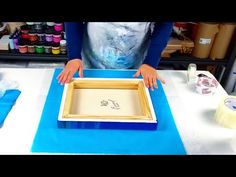How to Pack Paintings: 14 Steps

Packing valuable possessions like paintings requires extra care and attention to ensure their protection during transit. Here are 14 essential steps to help you pack your paintings safely and securely.
1. Gather packing materials: Before getting started, collect all necessary packing supplies like bubble wrap, packing tape, packing paper, cardboard corners, foam boards, and sturdy cardboard boxes large enough to accommodate your artworks.
2. Clean the painting: Use a soft brush or microfiber cloth to gently remove dust from the surface of the painting. This will prevent debris from causing damage during transportation.
3. Remove any hardware: Detach any hanging hardware or wires from the back of the frame to avoid scratching or other damage.
4. Wrap the painting with glassine: Passes acid-free glassine paper over the surface of both framed and unframed paintings. Tape the edges of the glassine paper together at the back of the artwork, ensuring full coverage.
5. Apply cardboard corners: For added protection, attach protective cardboard corners to all four corners of the framed painting.
6. Layer with bubble wrap: Enclose your wrapped painting with a layer of bubble wrap—ensure bubbles face outward—and securely tape all edges.
7. Add a foam board layer (optional): For added protection, sandwich your wrapped painting between two sheets of foam board slightly larger than your painting and secure them together with packing tape.
8. Place in a box: Find a sturdy box that fits the painting snuggly with minimal room for movement—avoid using very large boxes as paintings may shift during transit.
9. Fill empty space in the box: Use crumpled packing paper or additional bubble wrap to fill any remaining void spaces within the box for added stability and security.
10. Seal and secure: Close up the box by folding all flaps and thoroughly taping them shut using high-quality packing tape—use enough layers of tape to ensure the box remains sealed during transport.
11. Label the box: Clearly write “Fragile” and “This Side Up” with arrows pointing to the top of the box, as well as any other relevant handling instructions using a bold, permanent marker.
12. Calculate value and insure: Determine the estimated value of your painting and acquire appropriate insurance coverage for added peace of mind during transit.
13. Notify moving company (if applicable): If you’re using professional movers, provide them with information about your packed painting—its dimensions, weight, handling instructions, value, and insured status—so they can plan accordingly.
14. Plan the move: If transporting the painting on your own, properly secure it in your vehicle to avoid shifting or potential damage during the journey. Lay it flat if possible with no objects placed on top of it.
By following these 14 essential steps, you can have confidence knowing your precious artwork is well protected and prepared for its journey to its new destination.






